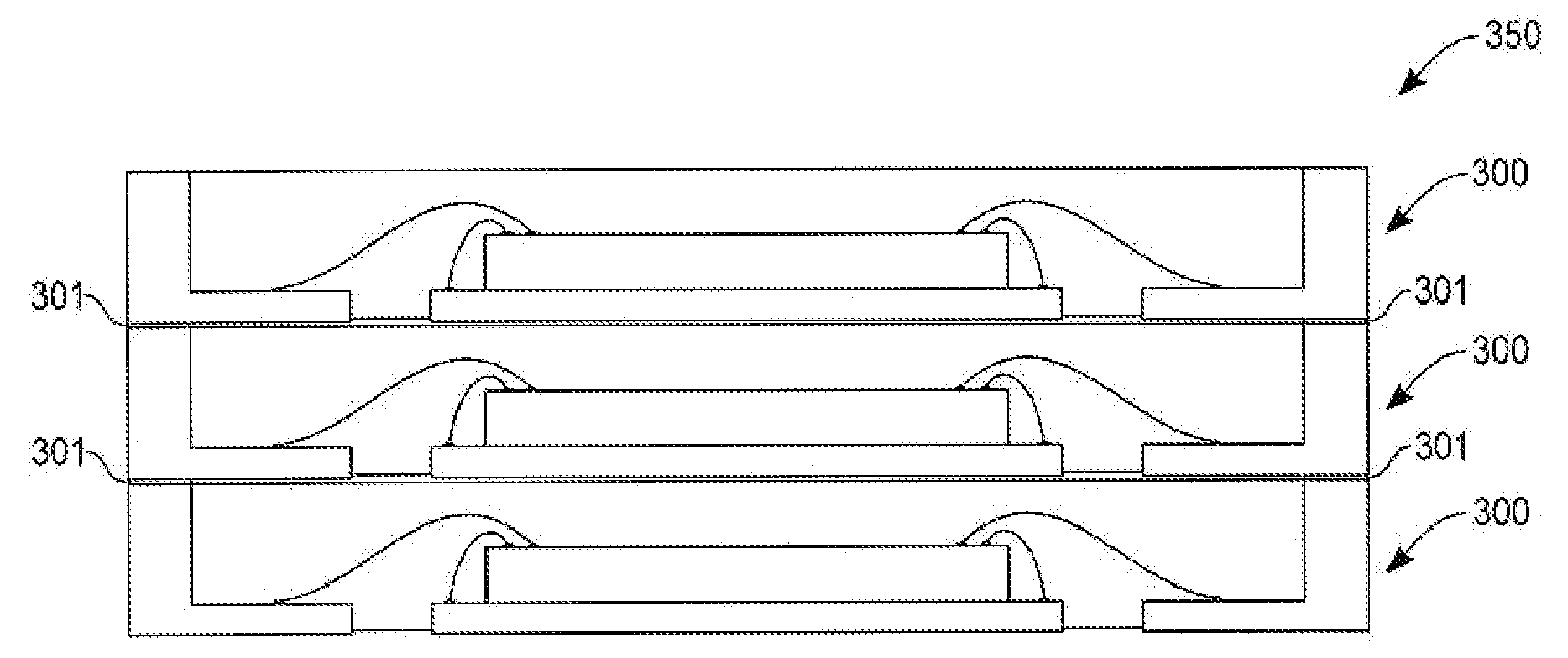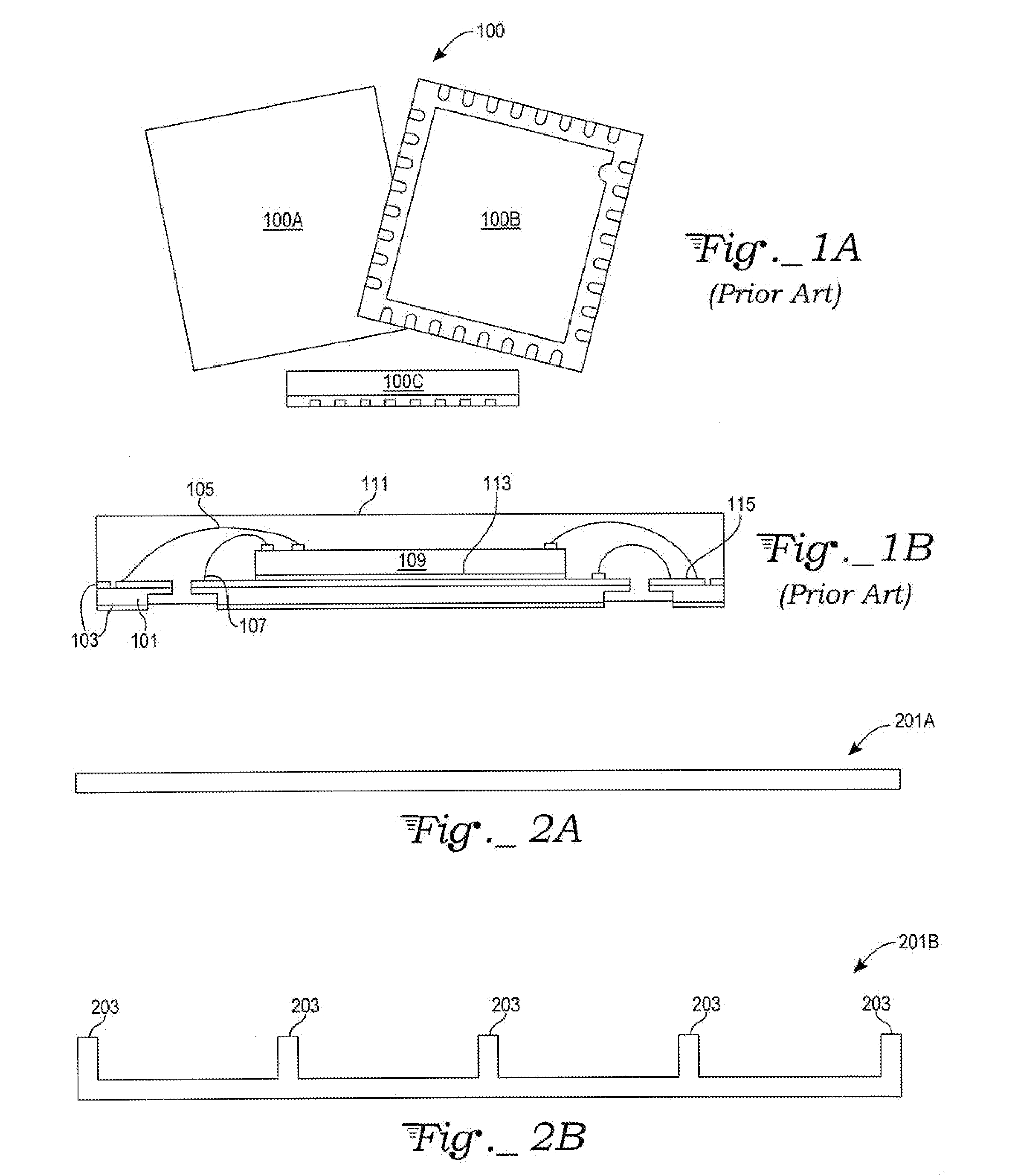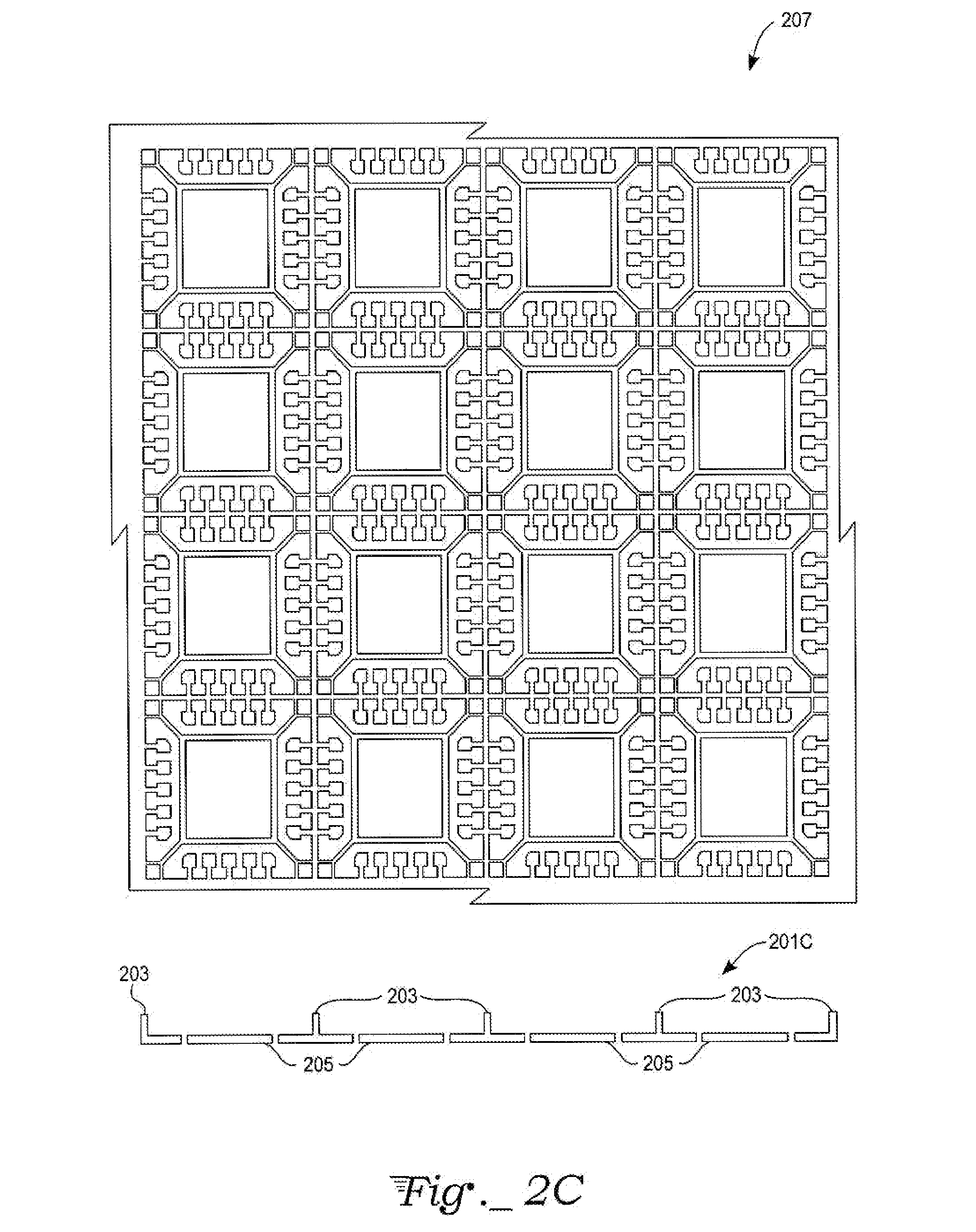Stackable packages for three-dimensional packaging of semiconductor dice
a technology of stackable packages and semiconductor dice, which is applied in the direction of semiconductor devices, semiconductor/solid-state device details, electrical equipment, etc., can solve the problems of prone to bending, increased package footprint, and expensive trimming tools
- Summary
- Abstract
- Description
- Claims
- Application Information
AI Technical Summary
Benefits of technology
Problems solved by technology
Method used
Image
Examples
Embodiment Construction
[0021]In FIG. 2A, a substrate strip 201A is selected to have a thickness close to a final “height” of a completed package. The height chosen for the substrate strip 201A will be based on particular components placed in the final package but will typically vary from 0.2 mm to 2 mm. Additional details to determine an actual height for a given package will be discussed in greater detail, infra.
[0022]Processes described herein refer to exemplary embodiments where many packages are formed in an X-Y matrix, although a single package could readily be formed by the same process as well. The X-Y matrix size for the substrate strip 201A may be chosen to suit a particular vendor's tooling. In a specific exemplary embodiment, the X-Y dimensions of the substrate may be 205 mm×60 mm and the construction material is selected to be copper. In other exemplary embodiments, the substrate 201A may be another type of metallic or non-metallic material. The material may be either electrically conductive o...
PUM
 Login to View More
Login to View More Abstract
Description
Claims
Application Information
 Login to View More
Login to View More - R&D
- Intellectual Property
- Life Sciences
- Materials
- Tech Scout
- Unparalleled Data Quality
- Higher Quality Content
- 60% Fewer Hallucinations
Browse by: Latest US Patents, China's latest patents, Technical Efficacy Thesaurus, Application Domain, Technology Topic, Popular Technical Reports.
© 2025 PatSnap. All rights reserved.Legal|Privacy policy|Modern Slavery Act Transparency Statement|Sitemap|About US| Contact US: help@patsnap.com



